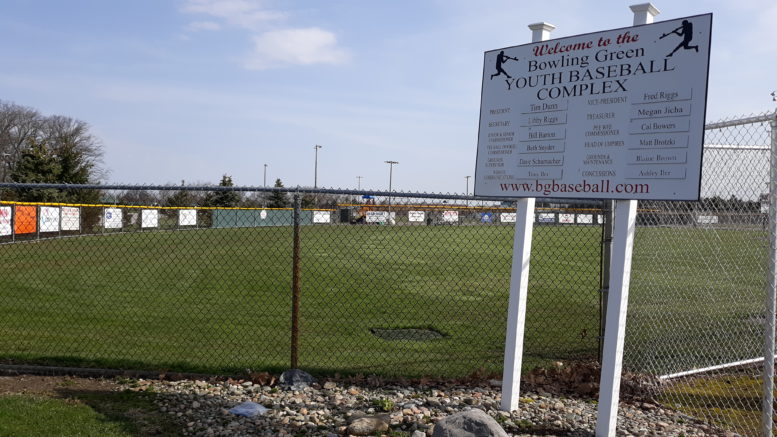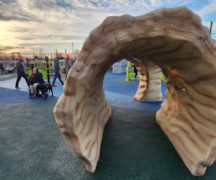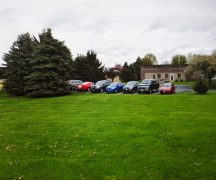By JAN LARSON McLAUGHLIN
BG Independent News
The baseball organization running the fields at Carter Park knocked one out of the park Monday evening.
The Bowling Green Board of Public Utilities voted unanimously to update the lighting on the fields – with an estimated price tag of $600,000.
The ballgames at Carter Park bring hundreds of thousands of people to Bowling Green each baseball season – which results in more income for businesses, according to BG Public Utilities Director Brian O’Connell.
“That brings revenue to the city,” O’Connell said Monday evening to the utilities board.
The southern baseball fields at Carter Park are owned by the city, however, all of the activities associated with youth baseball leagues, practices, games, and tournaments are organized by Bowling Green Youth Baseball.
The league is a non-profit organization operated by a volunteer board. The collaboration between the city and BGYB (formerly known as the Bowling Green Pee Wee League) goes back many years, O’Connell explained. Records show that prior to 1985 the city had been providing free utility service to the league facility then located on Mercer Road.
Then in 1985, an agreement was entered between the city and league to provide recreational activities under a lease agreement in Carter Park. As part of this agreement, the city had certain obligations such as extending utilities to the site and the league raised funds to help pay for the baseball field improvements.
Former utilities director Daryl Stockburger said the city electric division donated and installed the poles that are currently used to light the baseball fields. The city also ran power to the field lights and installed the lights on the poles. All of the electricity for the field lights has been gratis since they were installed.
BGYB President Tim Dunn contacted O’Connell in 2021 and requested assistance from the city to upgrade the baseball field lighting with new poles and LED lights. The lighting at the facility is unchanged from the 1980s when it was originally installed by the city.
Dunn noted that other baseball facilities in the area have better lighting, and competition to attract traveling baseball teams for tournaments is increasing. Travel teams have more options to select tournaments being held at other facilities with better amenities and better lighting.
Additionally, sports field lighting design standards have changed over the years to provide a more uniform and higher quality of light over the entire playing field, O’Connell said.
From an economic development perspective, the baseball tournaments hosted by the league bring many visitors to Bowling Green each year. These visitors require services from local businesses such as hotels, restaurants and gas stations.
All of these businesses use more electric, water, and wastewater services during these events which help the city’s utilities sales revenue, O’Connell said. Also, the tournaments generate revenue for the league to continue to invest in the baseball facilities at Carter Park and keep the program running.
“I have no way of calculating the economic benefits to the city, but I believe we are better off with these events in Bowling Green,” O’Connell said.
The lighting upgrades would likely include the removal of the existing lighting poles, installation of new 90-foot tall steel poles, and LED sports field lights that would provide optimal lighting of the field area as well as the surrounding walking and spectator areas.
The LED lights would potentially use 50% less energy than the existing lighting fixtures and they would last longer and require less maintenance for the league, according to O’Connell. Also, there is currently no lighting at the Tee-ball field in the northwest corner and the project could add lights for this field to provide games after dark.
The city’s utilities department put $600,000 in the 2022 Electric Capital Reserve Fund budget for this project.
“We are not sure of the final cost to perform these upgrades since we have not performed this type of work before, but we believe this number is a good estimate at this time,” O’Connell said.
In order to proceed, O’Connell recommended hiring an engineering firm to assist with the design of the lighting upgrades for the facility as well as preparing construction documents for bidding and contracting purposes
After some design work is completed, O’Connell said he will return to the board later this year to request authorization to proceed with the construction.
O’Connell said he anticipates the next request from the league will be to provide lighting for the north softball fields.





